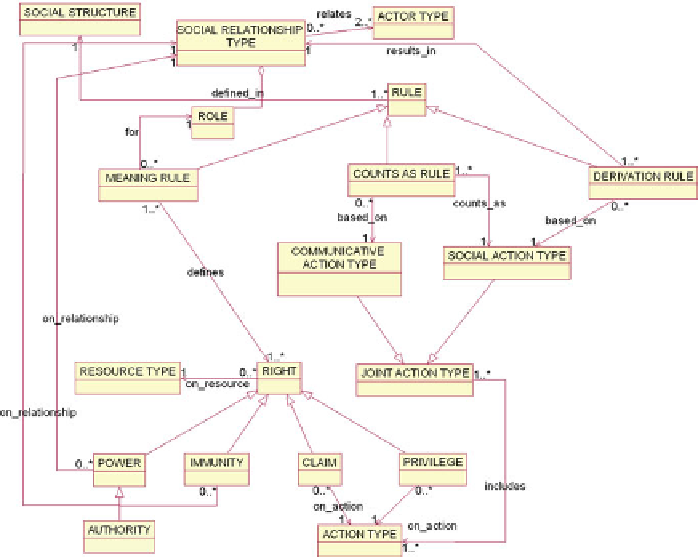Information Technology Reference
In-Depth Information
Fig. 4
Social relationships - meaning and creation
combinations that may be created. Furthermore, a value exchange may include
actions that are not about creating social relationships, such as the physical
transportation of goods.
We suggest that a value exchange is to include three components: social rela-
tionship creation, custody provision, and evidence provision. The first component
is about the rights an actor gets on some resource. If an actor gets a privilege on
a resource, it means that the actor is entitled to use that resource in some way. If
she gets a power on the resource, it means that she can create social relationships
concerning the resource. For example, in a value exchange where a person borrows
a car, she will get some privileges on it, meaning that she can drive it, park it, etc. If
she buys the car, she will get the same privileges but also powers on the car, allowing
her to lend it to other people or sell it.
The second component of a value exchange is about the custody of the resource
control of it, which typically implies physical access. If an actor has the custody
of a resource, this does not mean she has rights on it. For example, a distributor
may have the custody of some goods, but he is not allowed to use the goods. In a
value transfer, there is typically a provisioning of custody to the recipient through
which she gets access to the resource. An example is transporting some goods to the
recipient.

Search WWH ::

Custom Search